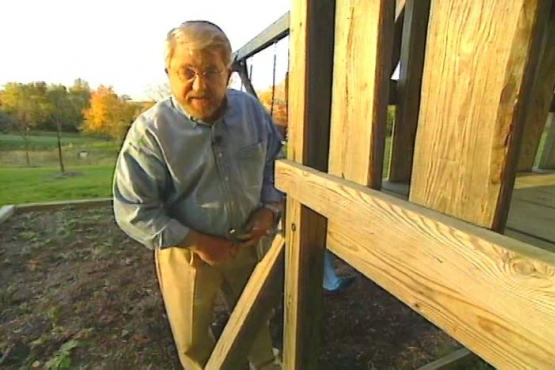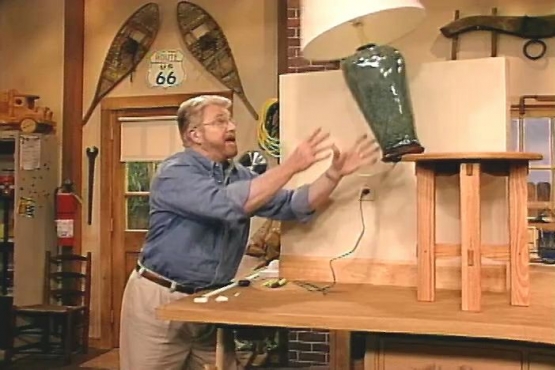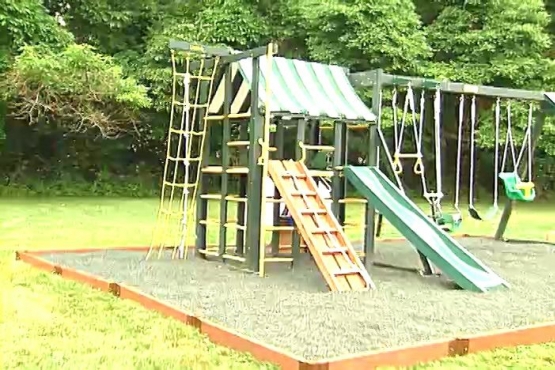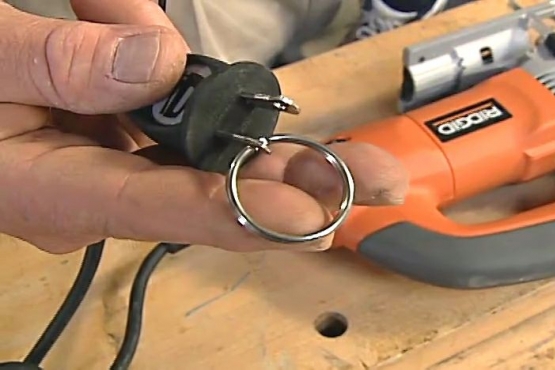RON HAZELTON:
Each year, some 250 children under the age of 5 drown in swimming pools. The fact is, it's the second leading cause of accidental death among children in this age group. Now a lot of parents and caregivers think they'll hear a child in distress. But the fact is, drowning happens quickly and without warning. Without question, adult supervision is the most important protection against accidental drowning. However, the sad truth is that two thirds of toddler drownings happen when parental supervision fails and there's no backup system in place. So in order to prevent toddler drownings, we have to think in terms of layers of protection. Now right here, I've got a set of sliding doors that opens out onto the pool area. I've equipped it with an alarm. When this is open, after about 7 seconds, that alarm will sound.
[ALARM]
I can silence the alarm by pushing this button on the side. Now if I want to use this door myself, I just open it up, press the button and pass through. Now this is my second layer of protection, a fence that runs all the way around the pool.
This one is 3 feet high and that's the absolute minimum. Now here's something you don't want to do. Put a piece of furniture like this close to the fence, it could actually act as a ladder for a toddler. Now my gate is self closing.
You can see the closer down there - that's that black spring. And I've mounted the latch on the inside of the gate so a toddler can't reach it. And high enough so they can't reach it. When I let go of this, it will close and latch automatically. Now this gate works pretty well but there are a couple of problems with it that I want to correct.
One is, I'm not crazy about this exposed spring right here. I'm concerned that a child might get their fingers caught in that. And then this latch, while it works good most of the time, sometimes because of changes in humidity, it just doesn't latch.
So I'm going to replace this hardware with something a little bit better. These are adjustable self closing hinges. First I mount base plates to the post and gate. Then bolt the hinges to the plates. First on the gate side. Then on the post.
The spring itself is completely concealed. And I adjust spring tension with a screwdriver. Well the gate's self closing. Now it's time to make it self latching. I start by mounting 2 brackets. Then slip the latch mechanism into place.
And secure it with a screw that will be concealed when the gate is closed. The latch mechanism is magnetic. Fewer moving parts and more reliable. And finally, the gate is easily locked. Now if a child should somehow get by the gate latch or the latch should malfunction -
- the next layer of protection is a gate alarm. A couple of screws are all that's needed to mount the battery operated alarm. Magnetic sensors are attached to both the gate and post. Now if a child is somehow able to operate the latch and pass through the gate, that will activate the alarm.
In a few seconds, it will go off automatically. It can be silenced by pushing the button here on the side. Now if I want to pass through here, I simply open the gate, push the button once - pass on through and the alarm will not go off.
This is another fence alternative. Made of nylon mesh, it's designed to be set up as needed. Aluminum posts slip into holes that have been bored in the pool deck. The fence goes up in sections that clip together with bolt snaps.
Now sometimes looks can be deceiving. Take this fence for example. It may not look very strong but actually it's quite tough. Also because it's nylon mesh, children can't get a hand hold or a foot hold and climb over. It has a self closing and self latching gate.
And the latch itself is way up here. Again, well out of the reach of toddlers. But maybe the best thing about this fence is, that when you don't want it or need it, you can take it down in a matter of minutes. Another layer of protection that I use is a pool alarm. This will alert me if a child falls into the pool and there's nobody around.
It simply sits on the side of the pool like this. And it's activated by a change in water displacement. Now this will simulate a toddler falling in. The surface disturbance caused by a falling child will set off the poolside alarm, which in turn, sends a signal to a remote unit inside the house. An alarm like this may not however, be activated by a child who climbs or walks into the water. That's why this product called the Safety Turtle was designed. The band is locked onto a child's wrist at times when they might have access to a pool.
Now once that wrist band gets wet, this alarm goes off. It can be operated by battery or plugged into a household circuit. Real quickly let me review the layers of protection. Alarms on doors that lead out into the pool area.
A fence completely around the pool that's at least 3 feet high. A gate that's self closing. And self latching. A gate alarm. And a pool alarm. Now you and I both know that none of these devices are a substitute for supervision.
But we're all human and anyone can have a momentary lapse of attention. On top of that, kids can move so quickly. So think of these as an added layer of protection.









